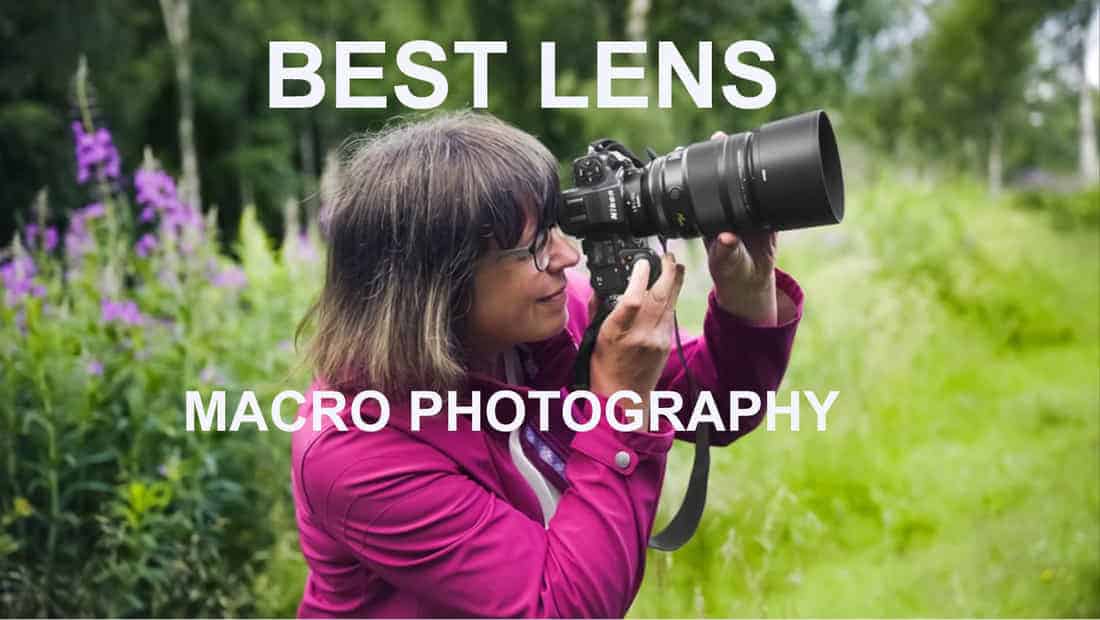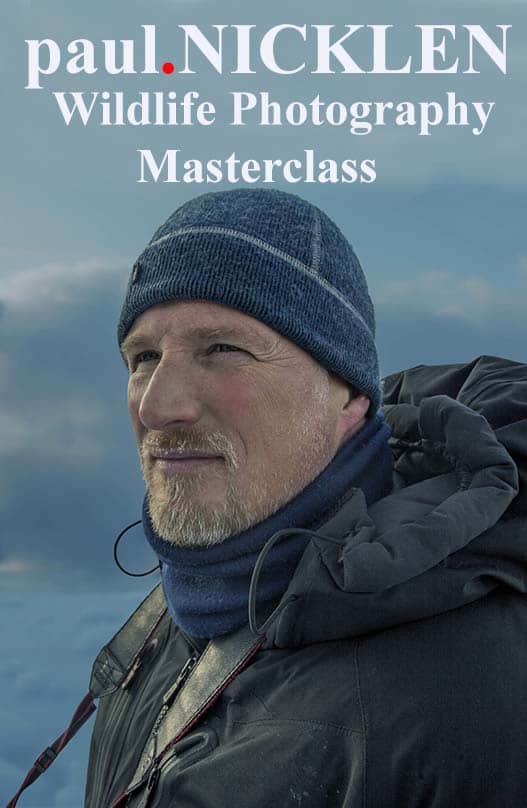The Nikon Z 135mm f/1.8 S Plena Lens is the best for Wildlife Macro Photography because of its ability to capture fine detail and exceptional bokeh allowing the subject to be isolated from the background.
Wildlife photography is a thrilling pursuit that allows us to capture the beauty and intricacies of the animal kingdom. To excel in this field, one must possess not only the skills and patience required but also the right equipment. Among the various tools available to photographers, the lens plays a pivotal role in determining the quality and style of the shots. In this article, we will delve into the Nikon Z 135mm f/1.8 S Plena Lens and explore why it is the perfect choice for wildlife macro photography.
Here’s a link to the article featured on the B&H Photo website with a 3:00-minute intro video that provides further details on this lens once you are done reading this review.
If you find articles like this helpful please consider using my B&H Photo affiliate links or Camera Canada Affiliate link when you make a purchase. It provides a small commission with no additional cost to you.
I. Understanding the Importance of the Right Lens
Before we dive into the specifics of the Nikon Z 135mm f/1.8 S Plena Lens, let’s discuss why selecting the right lens is crucial in wildlife macro photography.
A. Magnification and Detail
Macro photography involves capturing small subjects at a 1:1 magnification ratio or greater. This means that the lens must be capable of producing detailed, close-up images while maintaining image quality and sharpness. This new Nikon 135mm f/1.8 Plena lens has a 0.2x magnification ratio so if you plan on shooting very tiny subjects that require high magnification there are better options for you to consider as suggested below.
B. Working Distance
In wildlife macro photography, maintaining a comfortable working distance from your subject is essential. Some creatures are skittish or dangerous, making it necessary to maintain a safe distance while still capturing intricate details.
With a minimum focusing distance of .82m (2.69 ft) it is perfect for those subjects like butterflies, bees, frogs, etc, which is what I shoot.
C. Background Isolation
 The reason I prefer the Nikon Z 135mm f/1.8 S Plena Lens is for its ability to isolate the subject from the background. This is a common technique in wildlife macro photography for the subjects that I shoot such as butterflies and bees, etc.
The reason I prefer the Nikon Z 135mm f/1.8 S Plena Lens is for its ability to isolate the subject from the background. This is a common technique in wildlife macro photography for the subjects that I shoot such as butterflies and bees, etc.
The right lens can help achieve a beautiful background blur, known as bokeh, which makes your subject stand out.
II. Meet the Nikon Z 135mm f/1.8 S Plena Lens
A. Overview and Key Features
The Nikon Z 135mm f/1.8 S Plena Lens is part of Nikon’s renowned S-line of lenses designed for the Z-mount mirrorless cameras.
Six reasons why the Nikon Z 135mm the best lens for wildlife macro photography?
1/ Focal Length: At 135mm, this lens provides ample reach, allowing you to capture macro shots without disturbing your subjects. The longer focal length also offers versatility for other types of photography.
2/ Wide Aperture: With a maximum aperture of f/1.8, the lens excels in low-light conditions, making it possible to shoot in various lighting scenarios. The wide aperture also enables stunning background blur, drawing attention to your subject.
3/ Advanced Optics: The lens incorporates Nikon’s most advanced optical technologies, ensuring exceptional image quality, sharpness, and minimal aberrations.
4/ Dust and Weather Sealing: Built to withstand the elements, the lens is equipped with dust and weather sealing, allowing you to shoot in challenging environments without worry.
5/ Nano Crystal and ARNEO Coatings: These coatings reduce flare and ghosting, ensuring that your images are free from unwanted reflections and aberrations.
6/ Customizable Control Ring: The customizable control ring on the lens barrel provides convenient control over various settings, enhancing your shooting experience.
B. Magnification and Close-Focusing Capability
One of the most notable features of the Nikon Z 135mm f/1.8 S Plena Lens is its ability to capture macro shots. With a minimum focusing distance of just 0.82 meters (2.69 feet) and a 0.2x magnification ratio, this lens can reveal the intricate details of the wildlife subjects that I ‘m focused on shooting.
III. Advantages of the Nikon Z 135mm f/1.8 S Plena Lens in Wildlife Macro Photography
A. Exceptional Image Quality
The Nikon Z 135mm f/1.8 S Plena Lens is engineered to deliver stunning image quality. Its advanced optics and coatings ensure that your macro shots are tack-sharp with vibrant colors and high contrast. This lens is particularly adept at resolving fine details, which is essential for macro photography.
B. Versatility for Wildlife Photography
While the primary focus of this lens would be macro photography for the type of shooting that I do, its 135mm focal length also makes it versatile for other types of wildlife photography. Whether you’re capturing a close-up of a butterfly or zooming in on a humming bird , this lens can handle a wide range of subjects.
C. Bokeh and Background Isolation
The wide f/1.8 aperture of this lens allows you to create beautiful bokeh, effectively isolating your subject from distracting backgrounds. This feature is invaluable in wildlife macro photography, where background clutter can detract from the impact of your image.
D. Comfortable Working Distance
Maintaining a comfortable working distance from your subjects is crucial in wildlife photography, especially when dealing with potentially dangerous or flighty creatures. The 135mm focal length of this lens provides an adequate distance, allowing you to capture shots without disturbing your subjects.
E. Low-Light Performance
Many wildlife subjects are most active during dawn or dusk, when light levels are lower. The wide f/1.8 aperture of the Nikon Z 135mm f/1.8 S Plena Lens excels in low-light conditions, ensuring that you can capture compelling shots even in challenging lighting situations.
F. Durability and Weather Resistance
Wildlife photographers often find themselves in rugged and unpredictable environments. The lens’s dust and weather sealing provide peace of mind, allowing you to concentrate on your photography rather than worrying about protecting your equipment.
G. Customizable Control Ring
The customizable control ring on the lens barrel allows you to adjust various settings, such as aperture or exposure compensation, quickly and intuitively. This feature enhances your control over the shooting process and can be particularly useful in dynamic wildlife situations.
IV. Tips for Using the Nikon Z 135mm f/1.8 S Plena Lens in Wildlife Macro Photography
To make the most of this exceptional lens in wildlife macro photography, consider the following tips:
A. Use a Sturdy Tripod
Macro photography often requires very precise focusing, and any camera movement can result in blurry shots. Use a sturdy tripod to stabilize your setup and ensure sharp images.
B. Employ Focus Stacking
For extremely close-up shots, consider focus stacking. This technique involves taking multiple shots at slightly different focus distances and combining them in post-processing to achieve an extended depth of field.
C. Be Patient and Observant
Wildlife photography, especially macro photography, demands patience. Spend time observing your subjects and understanding their behavior. This will help you anticipate their movements and capture unique moments.
D. Experiment with Lighting
Macro subjects can be beautifully illuminated with natural light or external flash. Experiment with different lighting setups to achieve the desired mood and highlight the details of your subjects.
E. Practice Manual Focusing
While autofocus can be helpful, manual focusing allows for precise control over your composition. The Nikon Z 135mm f/1.8 S Plena Lens provides smooth and precise manual focus control.
F. Consider Using a Teleconverter
For even greater reach, consider using a teleconverter with the lens. This can extend the focal length while maintaining image quality, allowing you to get even closer to your subjects.
Why It May Not Be The Lens For You
If you delve into smaller insects you’ll want a lens that can get you in much closer with greater magnification such as the Nikon Z MC 105mm f/2,8 VR S. It has a minimum focus distance of .29m (.96ft) is half the price with a 1:1 magnification ratio and receives high praise from its users.
The Nikon Z MC 50mm f/2.8 is another excellent choice with a minimum focus distance of .16m (.52ft), 1:1 magnification and is very affordable.
V. Conclusion
The Nikon Z 135mm f/1.8 S Plena Lens is a remarkable tool for wildlife macro photography. It offers exceptional image quality, a versatile focal length, and numerous advantages that cater to the unique demands of this genre.
Its ability to capture fine details, create stunning background blur, and perform well in low light make it a perfect match for photographers who shoot subjects such as bees, butterflies, frogs and the like.
 For macro shooting that requires magnification and close proximity to your subject the Nikon Z MC 105mm f/2,8 VR S or Nikon Z MC 50mm f/2.8 are both better choices.
For macro shooting that requires magnification and close proximity to your subject the Nikon Z MC 105mm f/2,8 VR S or Nikon Z MC 50mm f/2.8 are both better choices.







